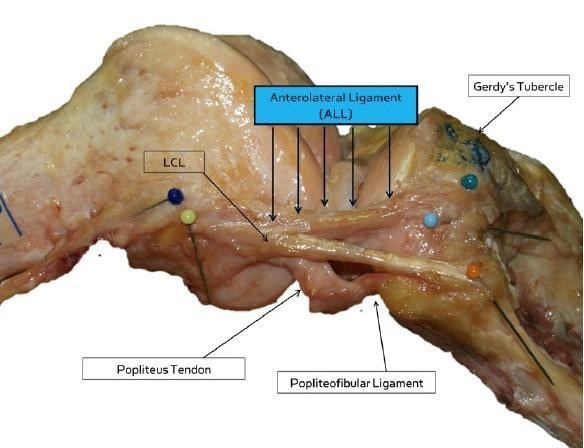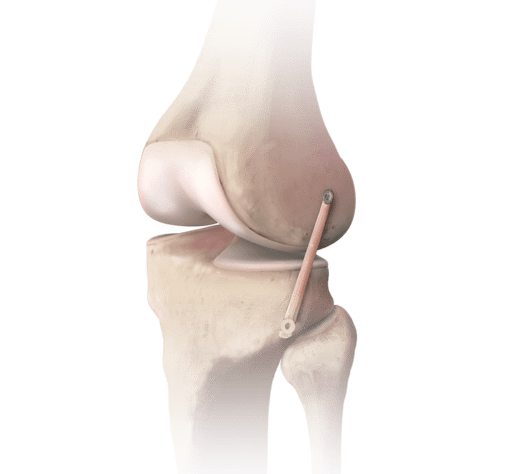Lateral tenodesis
Do I need a lateral tenodesis for my torn anterior cruciate ligament?
Why does a newly reconstructed cruciate ligament tear again?
While anterior cruciate ligament (ACL) reconstruction is a successful surgery, a significant percentage of patients experience a re-tear of their new ligament. There are many different reasons for this, often related to persistent instability, technical issues with the previous surgery, or another knee injury.
The ACL stabilizes the knee in two ways:
- Anterior-posterior stability: The ACL prevents the shinbone from moving forward relative to the thighbone.
- Rotational stability: The ACL prevents the shinbone from rotating inward relative to the thighbone.
Rotational stability is not solely provided by the ACL but also by other ligaments and structures on the outside of the knee. These include the iliotibial band, Kaplan fibers, and anterolateral ligament.
In addition to these ligaments on the outside of the knee, factors specific to the patient should also be considered as they can increase the risk of ACL reconstruction re-tear. These factors may include hypermobility, knee hyperextension, gender, and age.
Over the years, numerous scientific studies have highlighted the importance of considering all these factors in the surgical decision-making process for performing the operation. Ultimately, all these factors can contribute to the premature re-tear of your new ligament.
What is an ALL reconstruction or a lateral tenodesis?

The anterolateral ligament (ALL) is located on the outside of the knee and connects the femur (thighbone) to the tibia (shinbone).

The lateral tenodesis involves taking a portion of the iliotibial tract under the lateral collateral ligament and securing it to the femur.

The ALL reconstruction involves attaching a graft, which can also be made of synthetic material, with two screws at the original location of the anterolateral ligament.
Is there scientific evidence for lateral tenodesis?
Are there any drawbacks to lateral tenodesis?
Indications for lateral tenodesis
Not everyone requires this surgery, and it is primarily recommended for patients who are at a high risk of re-tearing their anterior cruciate ligament (ACL):
- Patients with hyperlaxity/hypermobility
- Patients younger than 30 years old
- Revisions of previously performed ACL reconstruction
- Elite athletes participating in cutting and pivoting sports such as football, hockey, tennis, and handball